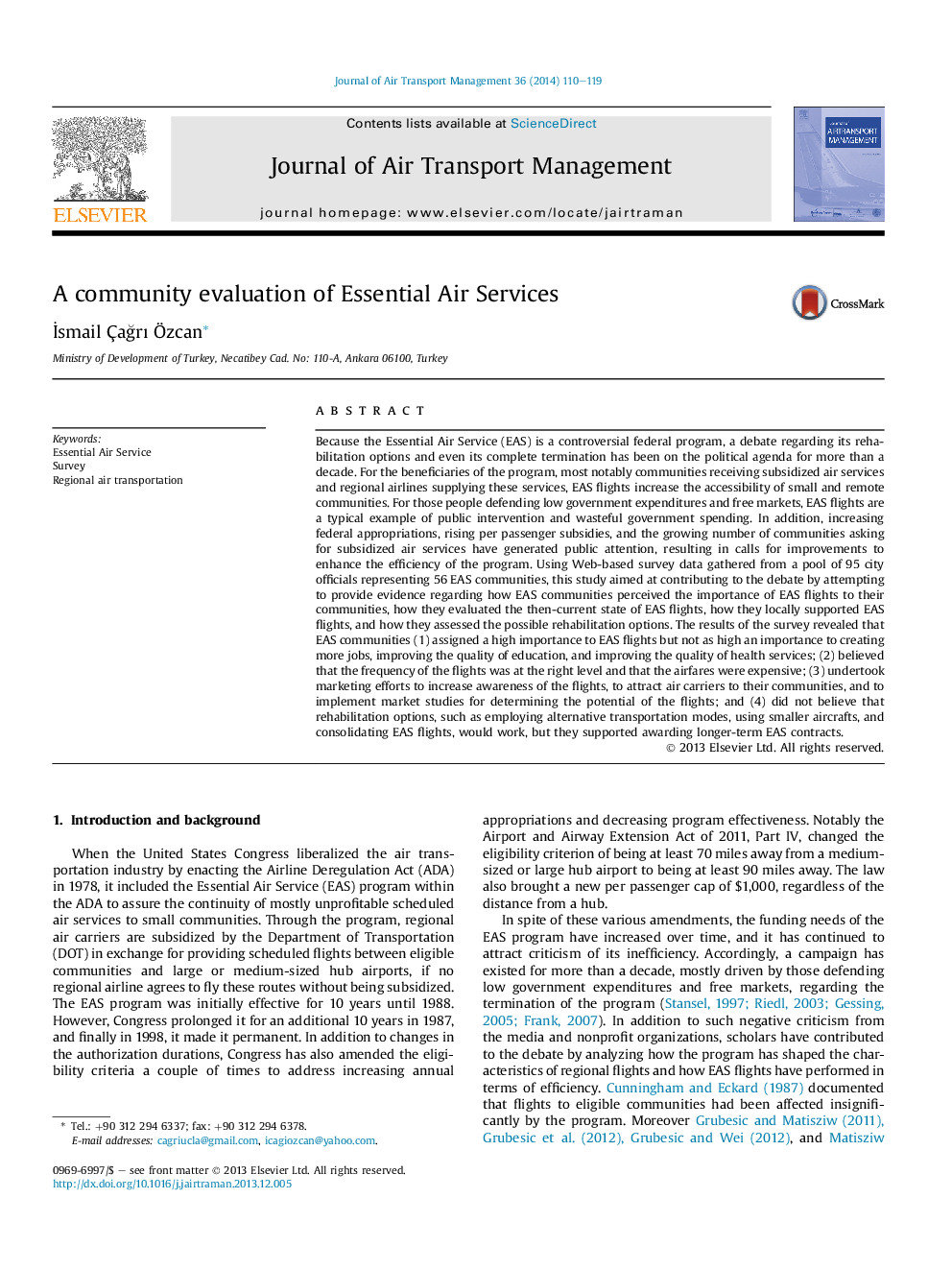| Article ID | Journal | Published Year | Pages | File Type |
|---|---|---|---|---|
| 7435924 | Journal of Air Transport Management | 2014 | 10 Pages |
Abstract
Because the Essential Air Service (EAS) is a controversial federal program, a debate regarding its rehabilitation options and even its complete termination has been on the political agenda for more than a decade. For the beneficiaries of the program, most notably communities receiving subsidized air services and regional airlines supplying these services, EAS flights increase the accessibility of small and remote communities. For those people defending low government expenditures and free markets, EAS flights are a typical example of public intervention and wasteful government spending. In addition, increasing federal appropriations, rising per passenger subsidies, and the growing number of communities asking for subsidized air services have generated public attention, resulting in calls for improvements to enhance the efficiency of the program. Using Web-based survey data gathered from a pool of 95 city officials representing 56 EAS communities, this study aimed at contributing to the debate by attempting to provide evidence regarding how EAS communities perceived the importance of EAS flights to their communities, how they evaluated the then-current state of EAS flights, how they locally supported EAS flights, and how they assessed the possible rehabilitation options. The results of the survey revealed that EAS communities (1) assigned a high importance to EAS flights but not as high an importance to creating more jobs, improving the quality of education, and improving the quality of health services; (2) believed that the frequency of the flights was at the right level and that the airfares were expensive; (3) undertook marketing efforts to increase awareness of the flights, to attract air carriers to their communities, and to implement market studies for determining the potential of the flights; and (4) did not believe that rehabilitation options, such as employing alternative transportation modes, using smaller aircrafts, and consolidating EAS flights, would work, but they supported awarding longer-term EAS contracts.
Keywords
Related Topics
Social Sciences and Humanities
Business, Management and Accounting
Strategy and Management
Authors
Ä°smail ÃaÄrı Ãzcan,
